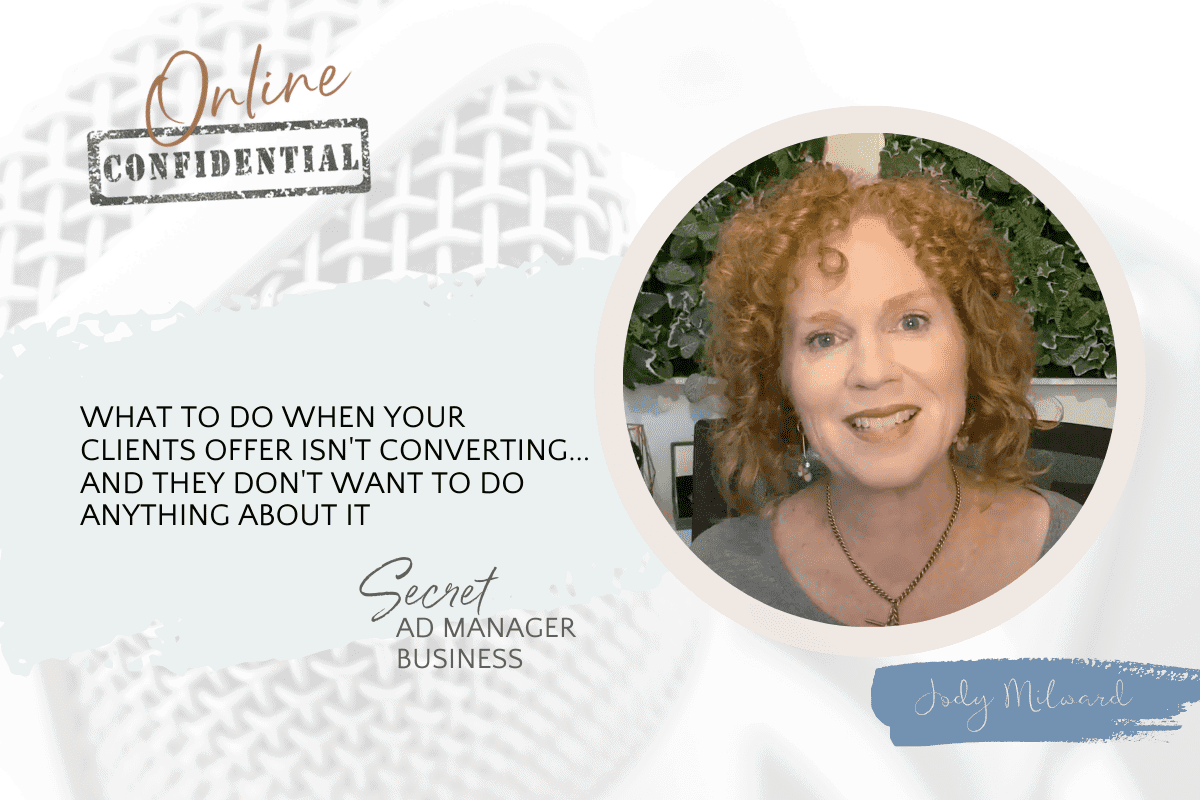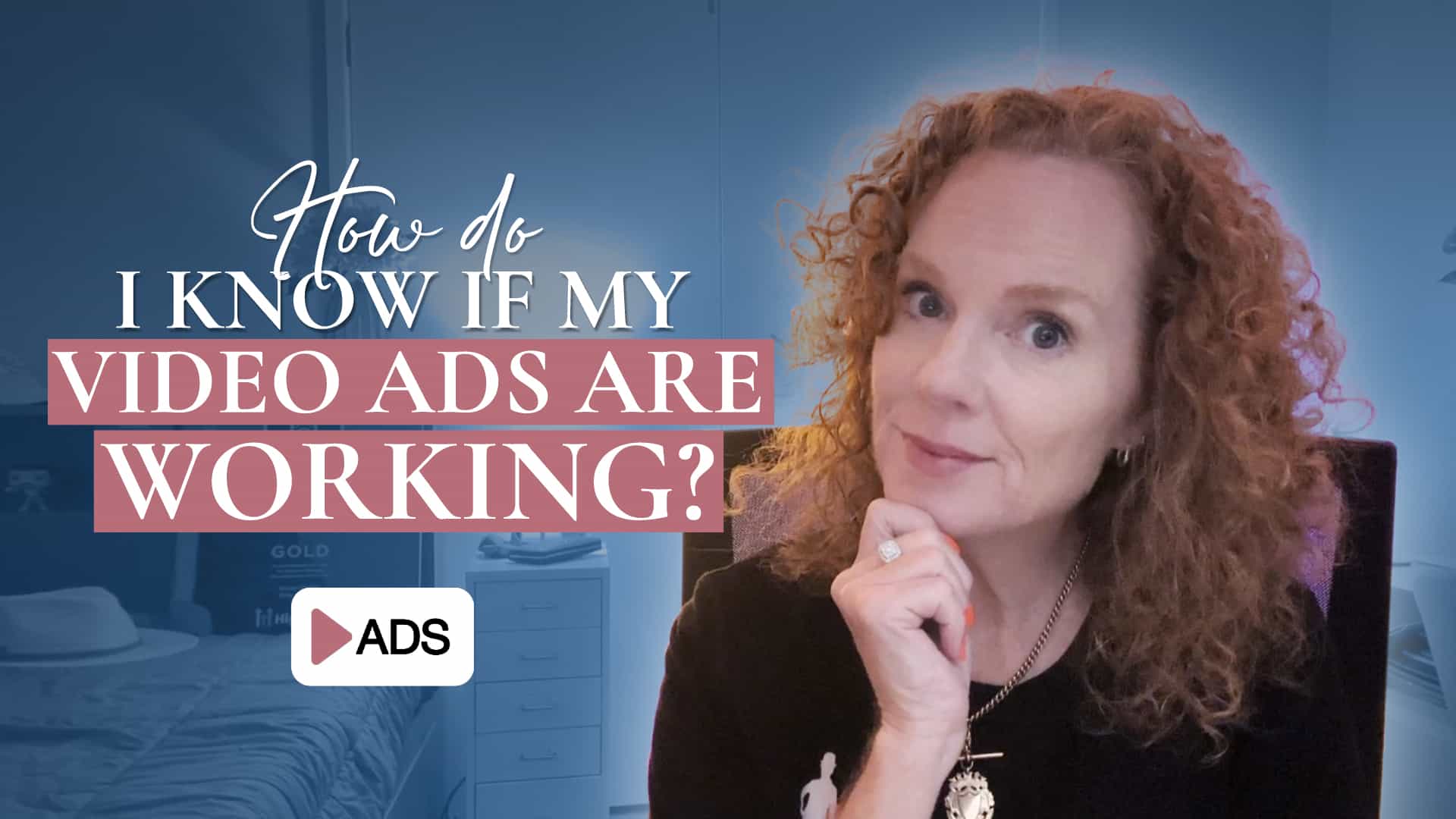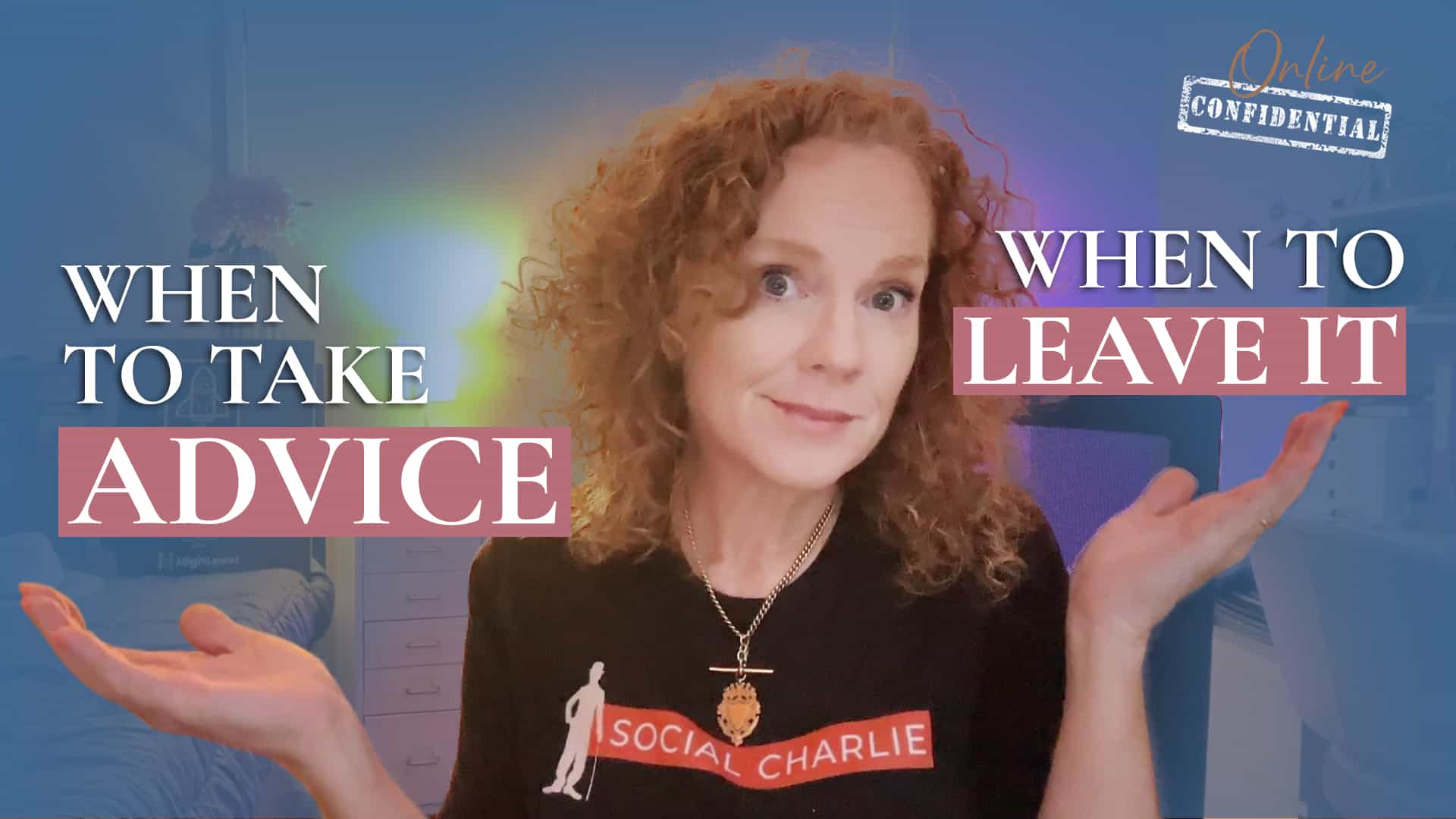What do you do when your client’s offer is not converting and they don’t want to do anything about it? As a super awesome and diligent ad manager, you know what data points to look at, and maybe you’ve watched a few previous episodes where we have talked about getting ads to convert by looking at the various copy and creative to make sure that what you’re doing with ads is working. So, armed with all the data and great click-through rates, various audiences tested, and different headlines, copy and creative – you have everything singing in Ads Manager. You are driving traffic to the sales page or the registration page, and people are going through and you’re going, “Yes! At last, I’ve got these ads working.” But there’s no sales coming through. It’s pretty disappointing, isn’t it? So you troubleshoot, you put on that private investigator hat, and you’re looking to see where the bottlenecks are. Why aren’t people converting for this offer after driving great traffic there. Why aren’t they converting?”
Well, it could be a number of things.
This is what you need to communicate with your client. It may be the webinar. What’s the drop-off rates like on the webinar? Are people staying through to the pitch? Nope. Okay. Let’s do some work on the webinar. Are they seeing the pitch and they’re not converting? If that’s the case, then they may need to work on the pitch segment. Are they getting to the sales page and then not converting? Then work on the sales page. A lot of work goes into these kinds of funnels where we’re driving traffic and sales for coaches, courses, creators, consultants, and info products.
So after all the testing and tweaking has been done, and your client knows who their avatar is and what their pain points are, but the offer still isn’t converting, then the chances are that it’s not any of these other points or data points. It’s not the ads. It’s not the webinars. It’s not the sales page. It is the offer.
And if you really have to be working hard to try and get an offer to convert, it may be a sign that people don’t want it. And this can be something that a lot of people (especially when they are starting out) can mistake and not actually check with their audience. They haven’t actually seen if anybody wants this product. And so they create it, put it out there and go, “Yeah, this is awesome. People are going to love it,” but they don’t actually want it.
All the data is telling you that people don’t actually want this offer. So you need to communicate with your client. You need to talk to them and say, “Look, we have all the messaging, everything that’s here in the copy, going all the way through the funnel. People are saying yes to all of these data points. ‘Yes, I’m going to stop scrolling in my newsfeed to read your ad. Yes, I’m going to click on see more and look at the rest of the ad copy. I’m going to click and say, yes, that I do want to learn more and go over to the website. And I’m going to say, yes, that I want to register. I’m going to say, yes, that I’m going to watch the webinar. I’m going to say, yes, that’ll open your emails. And I’m going to say, yes, that I will then head over to the sales page.'” But then if it’s a big fat no, the problem is the offer. And what do you do if your client doesn’t want to know about it? And unfortunately that can happen. You might think, why would anyone want to do that?
They’re paying money for an ad manager. They’re paying money for ads. Why wouldn’t they want to fix it? Some people can be a bit ignorant. Maybe they’re just a bit uneducated. Maybe it’s what their business coach told them to do. And so they’re out there doing it. So if it comes to a point where they’re saying, “No, no, no, it’s not that; it’s the audience targeting.” You’re targeting the wrong audiences and you have been working and working and working on getting these ads all humming along nicely. You’ve tested those various audiences. You’ve worked with the client, got the avatar, the messaging, and all those pieces together, and you’ve got the ads ticking. If people don’t want the offer, they’re going to be a bit dismal. They’re not going to be profitable for you. As an ad manager, that can leave you feeling really deflated. Because while we do not want to tie up our worth to our results, we are actually in a result-based business that people are paying us for. And our job is to get traffic over to their site to ideally convert them to sales. So if we have clients that we can’t get these sales for, and if you’re a conscientious ad manager who really does care about their clients, then it’s going to weigh a bit heavily on you.
If you have a client that this is happening with, where you’re driving this traffic, after all the testing, after running significant traffic through the funnel, and they’re still not converting, it needs to be made obvious that the issue is the offer.
One of the best things that you can probably do at this point is to part ways with the client. There’s no point continuing to put yourself in this stressful situation, trying to get results, trying to get sales through, and the other party just isn’t coming to the party. So at that point, what do you do? How do you go about parting ways with your client? What do you say? Well, it’s just a matter of looking at your agreement.
First of all, you have to check what your service agreement is and make sure that you do have a service agreement, which is something that I actually have my Elite Ad Managers do. They have a complete, drafted up service agreement that’s been written up by our lawyer. It’s worth one and a half thousand dollars and provides them with protection for situations like this. So make sure your service agreement is protecting you for situations like this and refer to it when things like this arise.
So it may be that you have to give 30 days’ notice. If that’s the case, then you would be advising your client that this is going to be your last 30 days together, and you’ll be trying everything that you can during that time. You can say, “I’ve done X, Y, Z, blah-blah-blah; you’ll see that we’ve got this many leads. We brought in this many leads, this many people to the webinar, and this many people to the sales page. We tested all these audiences, tested all of this creative, and tested all this messaging. We’ve done all that we can with this. So for the remaining 30 days, we’ll still continue to do the best that we can. We’ll still continue to optimize these ads to revise them and get the retargeting tweaked and refined as much as we can. But after these 30 days, we’re going to need to go our separate ways because we don’t want to have you on board and not get you results.”
So that’s just what you would have to be presenting to them. Making sure you give them that notice and letting them know when your time is up, and that you will have everything wrapped up for them. They’ll be able to go to whoever it is that they’re going to go to next to manage their ads. And you’ll have all the information there that they can take with them so that the off-boarding procedure is nice and smooth and you’re handling it with integrity and grace. That way if your client at some point goes to another ad manager and then they end up coming back to you saying, “Oh my gosh, I didn’t realize how awesome you were and how much you were doing for me. I’ve been to X, Y, and Z, and I didn’t get any of this attention. So I would love to work with you again, I’m reworking this and blah-blah-blah.”
Make sure that the off-boarding procedure is a nice, smooth one that’s professional. When you take care of them all the way out the door and just close the door behind you, not so that somebody is getting upset, it’s a nice closure.
I love to send a gift to my clients when they come on board and then also when we finish up working together. Say, “Hey, thank you so much. It’s been an absolute pleasure working with you. All the best for your future Facebook ads.”




